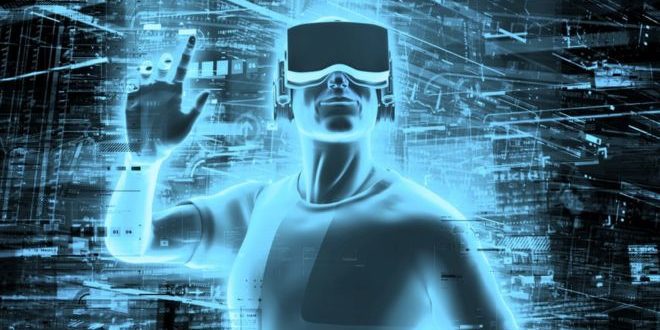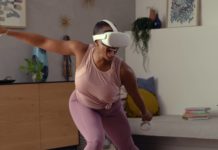The promise of VR this past year brought along the promise of Fitness that could be fun and while it certainly has spawn its own line of equipment and similar gadgets built for fitness, Fitness Vr has a lot to improve over the next year that it missed in 2016. Let’s go over what went wrong, what went right, and where we could go from here.
Mixed: A Triple A Game
In 2016, we got our first look at a AAA game, which means that it had great graphics, great gameplay, and great framerate. The definition of a AAA game just boils down to having a massive backing in terms of money, people, and influence. This game was Raw Data and it looked absolutely fantastic, but it was the only one of its kind to release for the entire year. Don’t start naming things like the dinosaur game or the DLC clown game because those games are short and made for testing the market, not a fully fledged, something-hour long game that costs a pretty penny. Raw Data was the only game this year that pushed the VR gear to the absolute limits, which is something that was both wrong and right.
It was right because it showed the bigger companies that VR was capable of handling and providing that type of quality right now and not years down the road as some thought. We’ve had VR before and it also always turned out to be a short burst of gimmickry so having a big game meant that the system was ready to become an industry.
It was wrong because it was still a stand-still game, where the user only ever had to move because they were being shot at or swung at. Sure, this provides a decent amount of exercise but moving through large scale maps and getting lost in the game is how you get the true fitness going. No major sports game was released, liked football or baseball. Instead, you have stationary sport games like Tennis and Table Tennis that require a small amount of leg movement while still being able to play the game. Even worse was that the fitness focused games, the games that actually promoted fitness, were often the ones that were shut down in the marketplace because it was very obvious that it was just a money grab.
Mostly Right: Fitness Equipment
There was a lot of right here, but only one wrong. Let’s go over what the market did right here because the wrong is only one thing, but it’s also a big thing. We now have instruments like Icaros and Hypersuit VR. We also have several different omni-directional tools for walking around in environments and then you have the several types of biking or other various VR equipment that came out to help people use VR to stay in shape. These were all right, right, right and beyond but, more importantly, almost all of them tried to make themselves compatible with current games, which is the best part of it all. Instead of getting a piece of equipment that only worked with one machine, the builders often made it so that you could use the real-life locomotion to power your movement in the game.
The part where they went wrong (and this part greatly angers me) is that they built equipment with fit people in mind. Why would you do that? Most of the equipment can only support people who are often only a little obese and you see a bunch of skinny people as part of their advertisement to boot (no offense to skinny people). I’m 6’3″ and 316 lbs, I can’t use a single one of the exercise equipment that I’ve seen unless I preorder a special machine from one of three niche companies (KatWalk in China, Icaros, and Holodia) for a couple grand. VirZoom only supports up to 6’2″ and 260 lbs, meaning that anyone above that is cut off from the machine.
Right: Everything Got Better and Cheaper
This is just an all around one since it effects everything in the VR industry, but it puts a helpful handful into VR fitness. The cost of making a VR machine went from $2,500 starting out all the way down to buying a PS4 and a headset for $700. This helps immensely with the wide majority of individuals who are overweight and need the exercise, but don’t want to give up gaming. Wireless technology allows for less frustration while playing and also allows people to set up their system in other rooms of the house. Better controls allowed for games to fine tune their own mechanics to create more engaging games. We even have VR in our pockets for a short experience with our phones. This all allows us to stay in the game longer, play more games, play more intense games, and exercise more and more without even paying attention to it.
Where it Should Go
Locomotion is the real pain here because many people can’t simply drop another half grand on something that will let them walk around. The price of this needs to go way down, but this will happen when there are more purchases of it. Additionally, the platform can be made smaller than it already is so that the price of making it is scaled back. With more decreases in the price of making a VR entertainment system, we’ll quickly see a full setup gear that costs less than a thousand dollars even more so than it already does. Since this past year was mostly about getting acquainted with all the new VR platforms, next year’s games should be a lot better and much more plentiful as once you learn how to build your first game, the second game becomes much easier to make.
The coming year looks very promising for fitness VR and I greatly look forward to it, but there’s also a lot to improve on, which will be the main focus of the year. Hopefully, with better gear and more integration with AR, we might see an entirely new side to Fitness VR.





